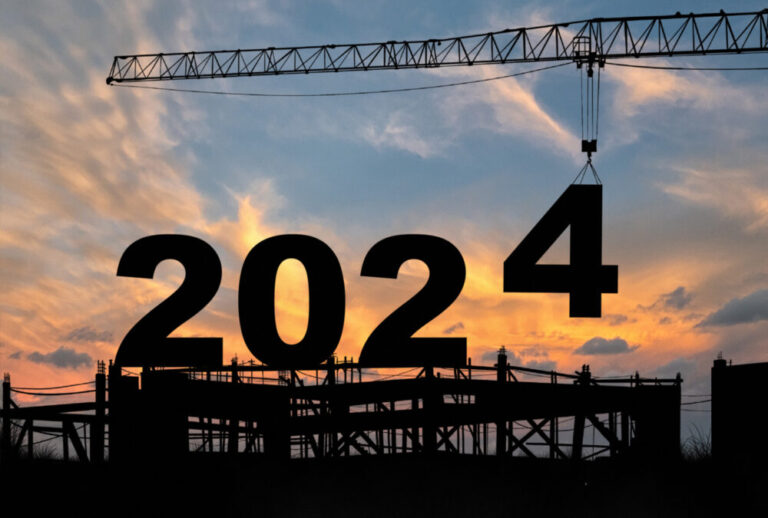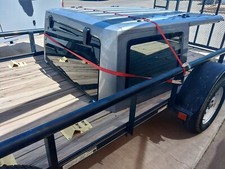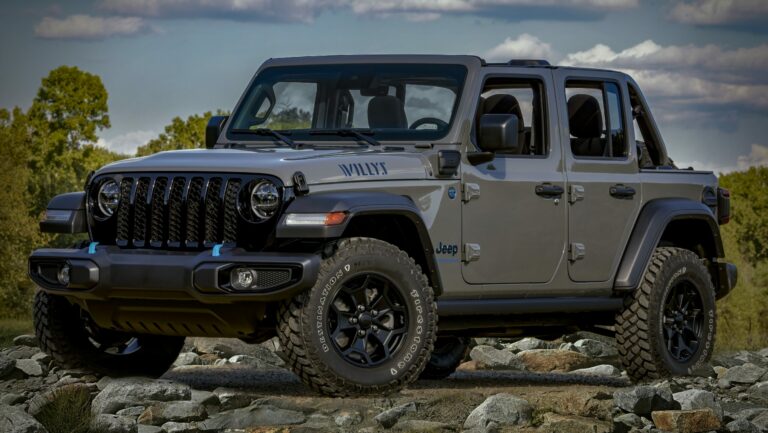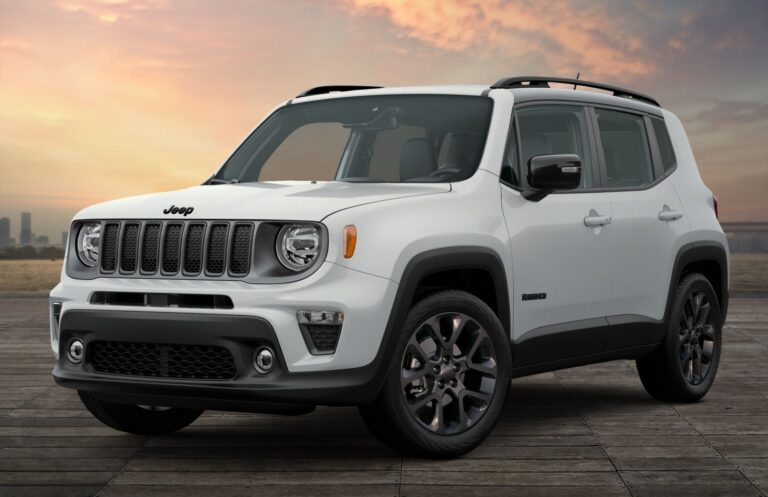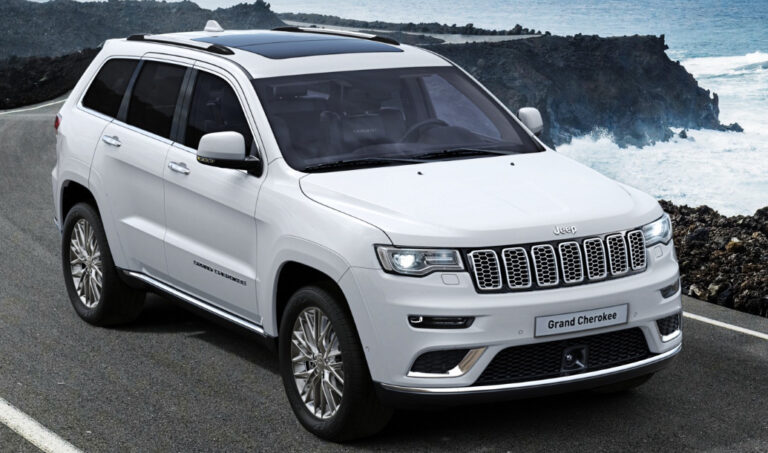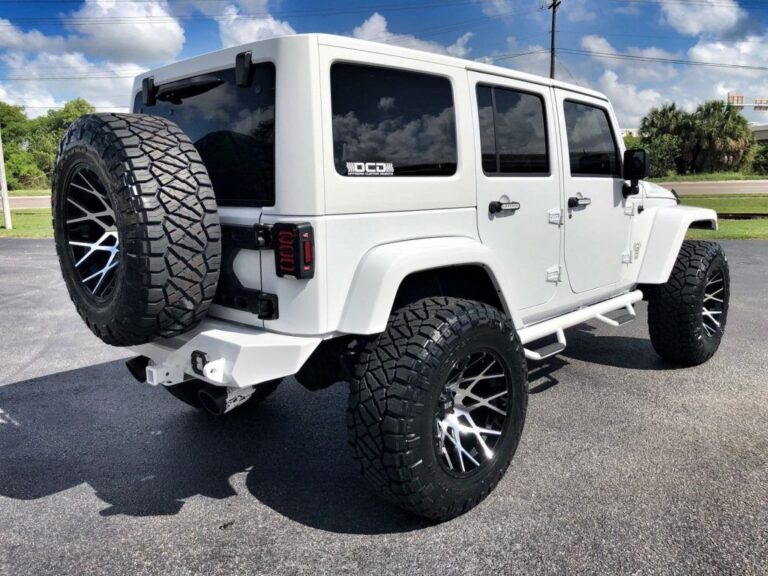1947 Jeep CJ-2A For Sale: A Comprehensive Buyer’s Guide to an American Icon
1947 Jeep CJ-2A For Sale: A Comprehensive Buyer’s Guide to an American Icon jeeps.truckstrend.com
The year 1947 holds a special place in the annals of automotive history, particularly for enthusiasts of rugged, no-nonsense utility vehicles. It was a pivotal year for the Willys-Overland company, as their Civilian Jeep (CJ) series, born from the legendary WWII MB, was hitting its stride. The 1947 Jeep CJ-2A, often affectionately known as the "Universal Jeep," represents a significant step in the evolution of the civilian utility vehicle, transitioning from a wartime necessity to an indispensable tool for farmers, adventurers, and anyone needing robust, go-anywhere transport.
For sale today, a 1947 Jeep CJ-2A isn’t just a vehicle; it’s a piece of living history, a tangible link to post-war America’s spirit of innovation and resilience. Its simple, durable design, coupled with its iconic flat-fendered silhouette, makes it instantly recognizable and highly desirable among collectors, restorers, and off-road enthusiasts. This article serves as a comprehensive guide for anyone considering the purchase of a 1947 Jeep CJ-2A, delving into its legacy, what to look for, where to find it, its value, and the unique ownership experience it offers.
1947 Jeep CJ-2A For Sale: A Comprehensive Buyer’s Guide to an American Icon
The Enduring Legacy of the 1947 CJ-2A
The story of the CJ-2A begins with the unparalleled success of the Willys MB during World War II. As the war drew to a close, Willys-Overland recognized the immense potential for a civilian version of their battle-proven vehicle. The CJ-2A, produced from 1945 to 1949, was the first mass-produced civilian Jeep and laid the groundwork for all subsequent CJ models.
While retaining the core ruggedness of its military predecessor, the CJ-2A introduced several civilian-friendly features. Most notably, it incorporated a tailgate, a side-mounted spare tire, larger headlights, and a seven-slot grille (compared to the MB’s nine-slot). Under the hood, the CJ-2A was powered by the robust 134 cu in (2.2 L) "Go-Devil" L-head four-cylinder engine, paired with a three-speed T-90 manual transmission and a two-speed Dana 18 transfer case, delivering power to Dana 25 (front) and Dana 27 (rear) axles. This powertrain, simple yet incredibly durable, allowed the CJ-2A to tackle diverse tasks, from plowing fields with its optional Power Take-Off (PTO) unit to navigating rough terrain. Its simplicity of design, ease of repair, and timeless utility are precisely why the 1947 CJ-2A remains a cherished classic today.
What to Look For When Buying a 1947 CJ-2A
Acquiring a 1947 Jeep CJ-2A is an exciting prospect, but it requires careful consideration and a thorough inspection. These vehicles are over 75 years old, and their condition can vary dramatically. Understanding what to look for will help you make an informed decision and avoid costly surprises.
Condition Categories:

Before diving into specifics, it’s helpful to categorize potential purchases by their general condition:
- Concours/Show Quality: These are meticulously restored vehicles, often exceeding original factory specifications. They are typically trailered to shows and command the highest prices. Expect perfection in every detail.
- Restored Driver: A well-restored vehicle that is fully functional and presentable for cruises or light use. It might have minor imperfections but is generally in excellent mechanical and cosmetic shape. This is often the sweet spot for enthusiasts who want to enjoy their classic.
- Original/Survivor: Vehicles that have been well-preserved over the decades, retaining much of their original paint, components, and "patina." While they might show signs of age, their originality adds significant value to collectors. They may require mechanical refreshing but less extensive bodywork.
- Project Vehicle: These are often the most affordable but require significant time, effort, and financial investment. They might be non-running, heavily rusted, or missing critical components. Only consider if you have the skills, resources, and dedication for a full restoration.

Key Inspection Points:
Regardless of the category, a detailed inspection is crucial. If you’re not mechanically inclined, bring someone who is.
- Frame: This is the backbone of the Jeep. Inspect thoroughly for rust, especially near spring mounts, body mounts, and crossmembers. Look for cracks, previous repairs, or bends from accidents. A compromised frame can be extremely difficult and expensive to repair correctly.
- Body:
- Rust: Common rust areas include floorboards (especially under the driver’s feet), hat channels (the support structures under the body), fender wells, cowl, and the lower sections of the tub. Check for bubbling paint, which indicates underlying rust.
- Bondo/Filler: Use a magnet to detect excessive body filler, which often hides rust or significant damage.
- Tailgate/Fenders: Ensure they are not excessively dented or damaged.
- Engine (Go-Devil L-head 4-cylinder):
- Leaks: Check for oil, coolant, or fuel leaks.
- Smoke: Blue smoke indicates burning oil, black smoke suggests rich fuel mixture, white smoke could be coolant.
- Running Condition: Listen for unusual noises (knocks, taps), check idle stability, and throttle response. Ideally, perform a compression test.
- Cooling System: Inspect radiator, hoses, and water pump for leaks or corrosion.
- Transmission (T-90) & Transfer Case (Dana 18):
- Shifting: Test all gears, including reverse, for smooth engagement. Listen for grinding or popping out of gear.
- 4×4 Engagement: Engage 4-wheel drive (high and low range) to ensure the transfer case works correctly.
- Leaks: Check for fluid leaks around seals and gaskets.
- Axles & Drivetrain: Inspect universal joints (U-joints) for play, differential housings for leaks, and axle shafts for damage.
- Brakes: Test pedal feel (should be firm, not spongy). Inspect brake lines, wheel cylinders, master cylinder, and drums for leaks, rust, or wear. Remember, these are manual drum brakes and will feel different from modern systems.
- Steering: Check for excessive play in the steering wheel. Inspect the steering box, tie rods, and drag link for wear or damage.
- Electrical System: Ensure all lights, gauges, and wipers are functional. Look for frayed wires or amateur wiring modifications.
- Originality & Documentation: If originality is important to you, research correct components for the 1947 model year. Ask for any service records, repair manuals, or, most importantly, a clear title.

Where to Find a 1947 Jeep CJ-2A For Sale
Finding the right 1947 CJ-2A requires patience and knowing where to look.
- Online Marketplaces:
- eBay Motors: A wide variety, from projects to restored examples, often with detailed photos.
- Craigslist/Facebook Marketplace: Good for local finds, potentially lower prices, but requires more caution due to lack of vetting.
- Specialty Forums & Groups: Websites like "The CJ2A Page" or dedicated Facebook groups for vintage Jeeps often have classifieds from knowledgeable sellers.
- Classic Car Websites:
- Hemmings Motor News: A long-standing source for classic vehicles, typically higher-quality listings.
- Bring a Trailer (BaT): Features curated auctions for collector vehicles, often with extensive photo galleries and community discussion. Can fetch premium prices.
- ClassicCars.com: Another broad marketplace for vintage automobiles.
- Auctions:
- Major auction houses like Mecum or Barrett-Jackson occasionally feature well-restored CJ-2As, though these are typically high-end examples.
- Local classic car auctions can be hit-or-miss but sometimes yield good finds.
- Specialty Dealers & Restorers: Some businesses specialize in vintage Jeeps. They often have fully restored examples or can source and restore one to your specifications, albeit at a higher cost.
- Word-of-Mouth & Car Shows: Attending local classic car shows, especially Jeep-focused events, can lead to direct connections with owners looking to sell.
Understanding the Value: Pricing Your 1947 CJ-2A
The price of a 1947 Jeep CJ-2A can vary significantly based on the factors discussed above, primarily its condition, originality, and documentation.
- Project Vehicles: Can range from $2,000 to $8,000, depending on completeness and severity of rust/damage. These are often non-running and require extensive work.
- Original/Survivor (Running Condition): Typically $8,000 to $18,000. These are generally solid vehicles that are drivable but may need mechanical refresh or cosmetic attention to bring them to a higher standard.
- Restored Drivers: Expect to pay $18,000 to $35,000. These are reliable, attractive vehicles that have undergone professional or high-quality amateur restoration.
- Concours/Show Quality: These can command $35,000 to $60,000+, particularly for exceptionally rare or perfectly restored examples with matching numbers and historical significance.
Factors that can increase value:
- Original PTO (Power Take-Off) unit: A rare and desirable factory option for running farm implements.
- Original "Jeep" script on the cowl: Some early CJ-2As had this, a remnant from the military MB.
- Correct engine/transmission/axle numbers: For serious collectors, matching numbers add value.
- Extensive documentation: Original manuals, service records, and clear ownership history.
Always research recent sales of similar vehicles and consult pricing guides like Hagerty or NADA Classic Car Values for current market trends.
The Ownership Experience: Tips and Considerations
Owning a 1947 Jeep CJ-2A is a unique experience, distinct from modern vehicle ownership.
- Maintenance: The CJ-2A is mechanically simple, making maintenance relatively straightforward for those with basic mechanical skills. Parts availability is surprisingly good, with many reproduction parts and NOS (New Old Stock) components available from specialized vendors. Regular oil changes, lubrication, and attention to fluid levels are key.
- Driving Characteristics: Be prepared for a raw, unfiltered driving experience. The CJ-2A lacks power steering, power brakes, air conditioning, and often even a heater. Top speeds are low (typically 45-55 mph comfortably), and the ride is firm. It’s not suited for highway cruising or daily commuting in modern traffic. It shines on back roads, trails, or as a parade vehicle.
- Modifications: Many CJ-2As have been modified over the years. Common upgrades include 12-volt electrical conversions (from original 6-volt), disc brake conversions, power steering additions, or even engine swaps for more power. While these can improve usability, they can also detract from originality for purists. Decide what your priorities are: authenticity or usability.
- Community: The vintage Jeep community is vibrant and supportive. Online forums, local clubs, and national events provide invaluable resources for parts, technical advice, and camaraderie. This community can be a huge asset in your ownership journey.
1947 Jeep CJ-2A Estimated Price Guide
| Condition Category | Estimated Price Range | Description |
|---|---|---|
| Project Vehicle | $2,000 – $8,000 | Non-running, significant rust, missing parts, requires complete restoration. For the dedicated enthusiast with time and resources. |
| Original/Survivor | $8,000 – $18,000 | Running, mostly original, showing age and patina. May need mechanical refresh but generally solid and drivable. |
| Restored Driver | $18,000 – $35,000 | Good to excellent cosmetic and mechanical condition. Reliable and presentable for cruises, shows, and light use. Quality restoration. |
| Concours/Show Quality | $35,000 – $60,000+ | Flawless, meticulously restored to original or better-than-original standards. Often trailered and commands top dollar. |
Note: Prices are estimates and can vary based on specific features (e.g., PTO), historical significance, location, and market demand.
Frequently Asked Questions (FAQ)
Q1: Is a 1947 Jeep CJ-2A a good daily driver?
A1: Generally, no. While incredibly robust, the CJ-2A lacks modern safety features, comfort amenities (like HVAC), and highway speed capability. It’s best suited for recreational use, light utility work, or as a collector’s item.
Q2: Are parts for a 1947 CJ-2A hard to find?
A2: Surprisingly, no. Due to its popularity and the long production run of similar components, many reproduction parts, New Old Stock (NOS) parts, and used parts are readily available from specialized vendors and online communities.
Q3: What’s the top speed of a 1947 CJ-2A?
A3: A stock CJ-2A typically has a comfortable cruising speed of 45-50 mph. While it might reach 55-60 mph downhill or with a tailwind, it’s not designed for sustained high-speed travel.
Q4: Can a 1947 CJ-2A go off-road?
A4: Absolutely! Its original design makes it highly capable off-road. Its short wheelbase, high ground clearance, and robust 4×4 system are excellent for navigating challenging terrain, much like its military ancestors.
Q5: What’s the main difference between a CJ-2A and a military MB?
A5: While visually similar, the CJ-2A has civilian-oriented features like a tailgate, side-mounted spare tire, larger headlights, a seven-slot grille (MB had nine), and often a Power Take-Off (PTO) unit. The MB typically had military-specific features like blackout lights and pintle hooks.
Q6: Should I restore a project CJ-2A myself or buy one already restored?
A6: This depends on your budget, skills, and time. Restoring a project can be more affordable initially but often costs more in the long run and requires significant mechanical and bodywork expertise. Buying a restored one saves time and effort but comes with a higher upfront cost. Consider your passion for the build process versus immediate usability.
Conclusion
The 1947 Jeep CJ-2A remains a timeless symbol of American ingenuity and rugged practicality. For those seeking a tangible connection to history, a versatile utility vehicle, or simply a fun, iconic ride, the CJ-2A offers an unparalleled experience. Its straightforward mechanics, surprising parts availability, and passionate community make ownership a rewarding endeavor.
Whether you’re eyeing a meticulously restored showpiece or a charming patina-laden survivor, remember that careful research, thorough inspection, and a clear understanding of your intentions are paramount. Owning a 1947 Jeep CJ-2A isn’t just about driving; it’s about preserving a piece of automotive heritage, embracing a simpler era, and enjoying the thrill of an authentic, go-anywhere machine. Your adventure with this true American icon awaits.

